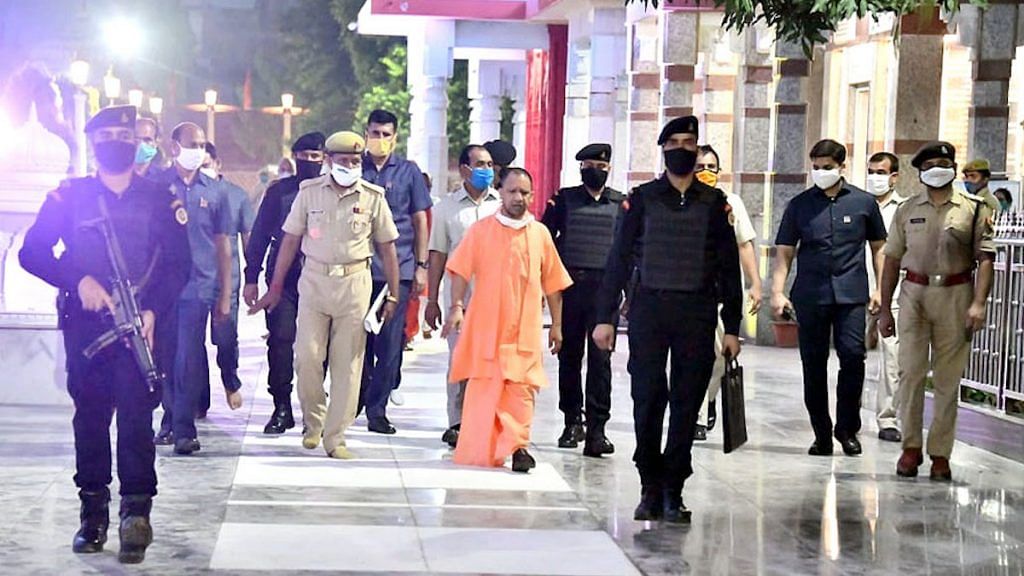The way Yogi Adityanath government has handled the gruesome case involving a Dalit woman in Uttar Pradesh’s Hathras has embarrassed India. However, this is not the only incident that has been mishandled by the Yogi government. The Supreme Court had to step in and give directives in the 2017 Unnao rape case. Hardly any day passes without news of heinous crimes against women in UP. Besides, the state has also been in news for the alleged murder of Brahmins. The situation is almost like a gang-war. All these incidents show that law and order in Uttar Pradesh has been jeopardised, but there has hardly been any attempt to analyse the causes behind it.
Just looking into the caste of the district magistrates and high-ranking police officers won’t explain UP’s problems today. We must also look into the damage Yogi Adityanath’s new systems — put in place due to his lack of administrative experience in governance and his unwillingness to share power with even his own cabinet ministers — is doing.
There are positions in Uttar Pradesh that are now far superior to DMs and SPs, and encroaching on the power of ministers, I call them ‘super DMs’.
Also read: How UP is political kingmaker but caste is king, and why Hathras case matters
Thakur-isation of administration
Whenever the talk of deterioration of law and order arises in Uttar Pradesh, attempts are made to understand it through the analysis of the castes of District Magistrates (DM) and Superintendents of Police (SP). Recently, Aam Aadmi Party (AAP) Rajya Sabha MP Sanjay Singh revealed that the DMs and SPs of 39 districts of UP belonged to the chief minister’s caste — Thakurs.
This study of the caste background of high officers relies on the assumption that the prejudice of such officers towards certain communities is the prime reason for bad law and order situation. Prejudice is an important element, and in the case of Hathras, the bias of the DM and SP were visible first hand, but it cannot be taken as the sole criterion to understand the situation in UP. One should also look into the administrative functioning of the current BJP government, on the basis of which Yogi Adityanath is trying to govern.
Also read: Who are Thakurs of UP and why are they powerful? Answers are key to understanding Hathras
Team 11 — Centralisation of power
The administrative functioning of Yogi Adityanath reveals that he is trying to run his government by centralising power. One reason behind this is the lack of experienced leaders in the BJP, and another is the party’s reluctance to empower others. The BJP had to induct many leaders from opposition parties in order to win the assembly election, and electoral compulsions have forced Yogi Adityanath to include these leaders in his cabinet. But he has ensured that important ministries are not given to them. For example, leaders such as Swami Prasad Maurya and Dara Singh Chauhan who joined the BJP from the Bahujan Samaj Party (BSP) have been given less significant ministries. Adityanath has kept crucial departments, including the home department, with himself. It is ironic that the state that is geographically and demographically larger than many European countries does not have a full-time home minister.
Adityanath’s reluctance to share power with his cabinet ministers is also visible in his frequent meetings with secretaries. His meetings with his cabinet colleagues are fewer in number. Since Adityanath had no administrative experience in governance before being sworn in as chief minister, his dependence on secretaries to run the government is always high. He has constituted a team of bureaucrats, called Team 11, on the lines of American presidential style of government. The officers of this team are mostly upper caste and have been in news since the outbreak of the coronavirus.
Also read: Congress listened, Yogi doesn’t — Why Hathras isn’t the same as Delhi 2012 gangrape case
Super DMs — Secretary in-charge
Adityanath’s dependence on the bureaucracy means that Uttar Pradesh is not really being run by ministers anymore. Take the position of ‘secretary in-charge’ — under which senior secretaries of different departments have been given responsibility for districts. These days, it seems that the DMs and SPs are rarely running the districts, it is the secretary in-charge who is responsible. The work of the DM and SP has been virtually reduced to collecting data for Union and state government schemes.
Before the secretary in-charge post, there was the ‘minister in-charge’ post — under which a minister was allotted a district, and they would meet with the district officers once a month and give necessary guidelines. Although this system is still in place, its significance has declined due to the new arrangement. The secretary in-charge directly reports to the chief minister’s core team and hence has emerged as the ‘Super DM’ of the district. If the law and order situation of Uttar Pradesh is deteriorating, look at how much Adityanath’s new systems are contributing to it.
The author is a PhD scholar at Royal Holloway, University of London. Views are personal.
